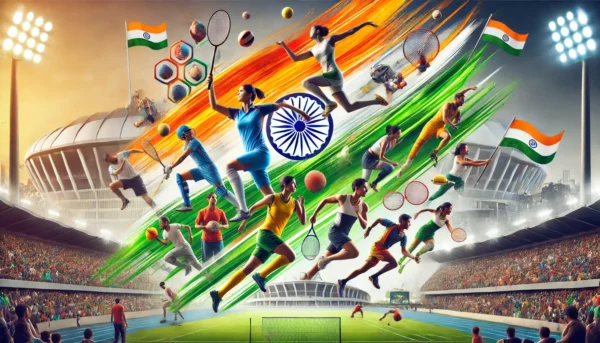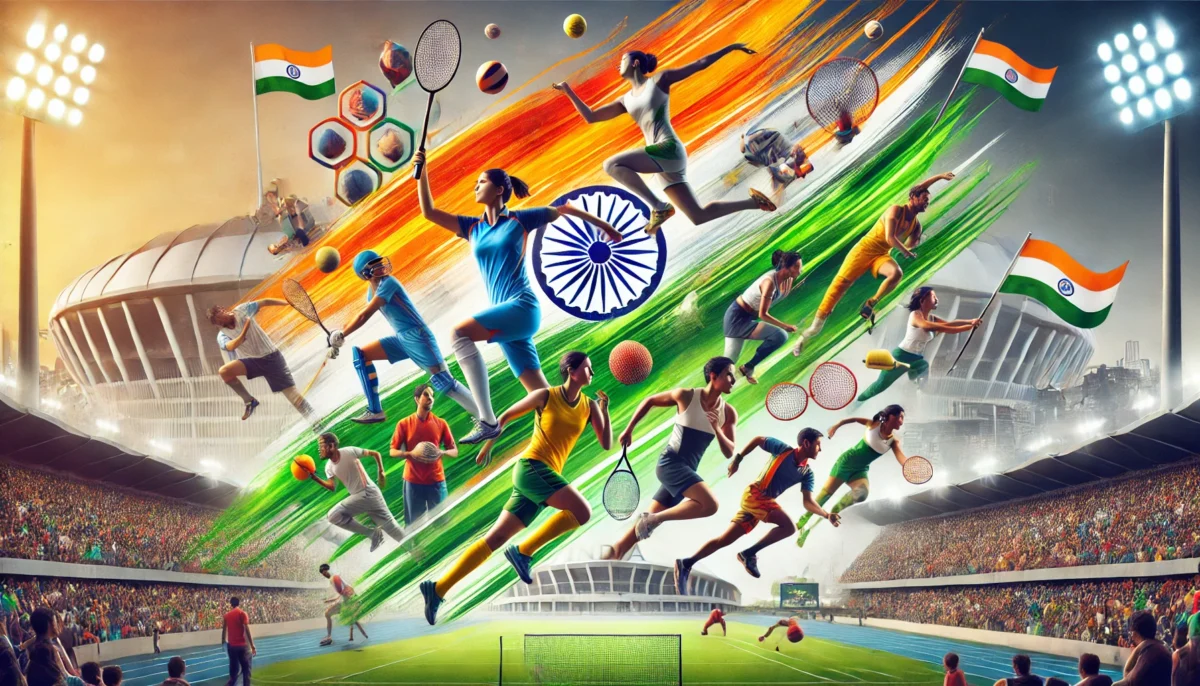
For decades, cricket has been India’s darling. Hasn’t it? Stay tuned, though; something is emerging.

India is waking up to discover not just cricket, but a whole feast of accessible sports, from badminton and Kabaddi to online games like aviator online game by odds96. This change isn’t just about medals and trophies; it’s changing the way we view sport, inspiring new heroes, and even influencing our weekends.
Remember when the degree of football enthusiasm in India was limited to donning a Manchester United jersey? Those days are quickly disappearing. When the Indian Super League (ISL) started in 2014, we had suddenly our own football heroes to support. Nobody is wondering, however, if the ISL is building a sustainable football environment or just a flashy band-aid covering a more serious injury.
Indeed, we have improved stadiums and some elite foreign players, but what about the local youngster hoping to be Sunil Chhetri’s successor? Are we creating a pipeline from gully football to the major leagues? It’s time we discussed how Indian football may close the distance between rural potential and metropolitan possibilities.
From the game we used for summer holidays, badminton is now a respectable job path. Superstars like P.V. Sindhu and Saina Nehwal are helping children trade badminton rackets for cricket bats. Realistically, however, how many Sindhus a nation can generate?
Here’s a question: Are we so preoccupied with building personal stars that we are ignoring team events? When did you last learn about India’s team badminton championship performance? Perhaps it’s time we somewhat distribute our attention.
Though it has always been a part of our DNA, wrestling is just now beginning to take the stage. Men like Sushil Kumar and ladies like Sakshi Malik have proved that one can go from a dusty akhara to an Olympic podium. Still, here is the million-dollar question: How may wrestling be modernized without sacrificing its roots?
Indeed, we now have the Pro Wrestling League all glammed for TV. Are we thus running the danger of separating the modern-day wrestlers from the traditional pehelwans? India may turn into a wrestling superpower by striking that equilibrium.
Talk about a glow-up! From the game your grandpa mentioned, Kabaddi evolved into prime-time TV content. The Pro Kabaddi League (PKL) elevated a basic tag game into a highly competitive sport. Here’s a surprise, however, for you: Is the rising glitz of kabaddi driving players from modest backgrounds out?
Consider it: the entrance barrier increases as the sport moves more professionally. Are we ensuring the little rural child still has a chance at PKL stardom? We really ought to have that talk.
Particularly in cities, basketball is becoming very popular. We have even seen a few people make it to the margins of the major league; the NBA is aggressively pushing in India. Let’s start with the elephant in the room: Are we tall enough as a country to play basketball internationally?
Should we be building a style of play that fits our physical traits instead of only stressing height? Perhaps our passport for worldwide success is a fast-paced, high-pressing game. It’s time we discovered our own basketball identity and quit trying to play like the Americans.
Hockey is like that old buddy who has struggled but is at last organizing his life. Our hockey teams are making us proud once again after years of wilderness. But here’s a question that will cause you to say “hmmm”: Despite all this accomplishment, why do we find it difficult to pack hockey match stadiums?
Does this constitute a marketing issue? Alternatively is it deeper? Have we lost that emotional connection with our national sport? Hockey’s last piece in the jigsaw of its rebirth might be reconnecting the people with it.
Though on paper “Khelo India” sounds fantastic, let’s go right to brass tacks: are these facilities really reaching the children most in need of them? Building a modern stadium in a metropolis is one thing; however, what about the gifted young person from a rural area who never has seen a synthetic track?
Here’s a daring concept: how about a paradigm wherein excellent facilities rotate among many areas instead of concentrating resources in metropolitan centers? Mobile sports teams might provide excellent instruction right in the most distant areas of India. Strange? Possessively. Still, it may just be effective.
Yes, TV is showing more non-cricket sports, but let’s be honest: the quality of broadcast usually seems to be secondary. Why is it that whilst other sports are stuck with generic commentary, we get excellent analysis for every cricket match?
Suppose we spent money creating professional commentators for every sport? Imagine hearing a former kabaddi champion talk down a raid in real-time or a chess maestro elucidating the subtleties of a vital move. You establish an informed, involved following this way.
Also Read: Joe Root Becomes England’s Leading Run-scorer in Test Cricket, Goes Past Sir Alastair Cook
It’s fantastic that big businesses are at last looking beyond cricket. The billion-rupee issue is thus: Are we designing a system wherein just a small number of elite athletes in every sport earn the lion’s share of sponsorships? What about the mid-level athletes who need help to make that last tremendous leap?
Perhaps we could have a paradigm wherein businesses fund whole sporting events instead than just one person. Share the riches and tend the ecology; everyone gains.
Let me say straight forwardly: we have issues. The litany of corruption in sports bodies, lack of openness in choices, poor athlete support runs on. Rather of only pointing fingers, however, let’s start discussing fixes.
Suppose we had a centralized authority free from political meddling to supervise all sports development. Alternatively an athletes’ union able to defend players’ rights in all sports? Though they are difficult, they are vital talks if we are to see actual transformation.
The next time someone inquires about sports in India, avoid only spouting out cricket statistics. Tell them about the young archer hoping for Olympic gold or the kabaddi player who has become really well-known. Because that is the modern India, a country where every sport has opportunity to flourish.
India’s sports landscape is becoming to resemble a magnificent buffet — there is something for everyone. Maintaining this momentum is the difficulty today. It goes beyond only earning medals — though they are great. It’s about building a society where a child may dream of becoming a boxer, swimmer, yes, even a cricketer, knowing they would have the means to follow that desire.